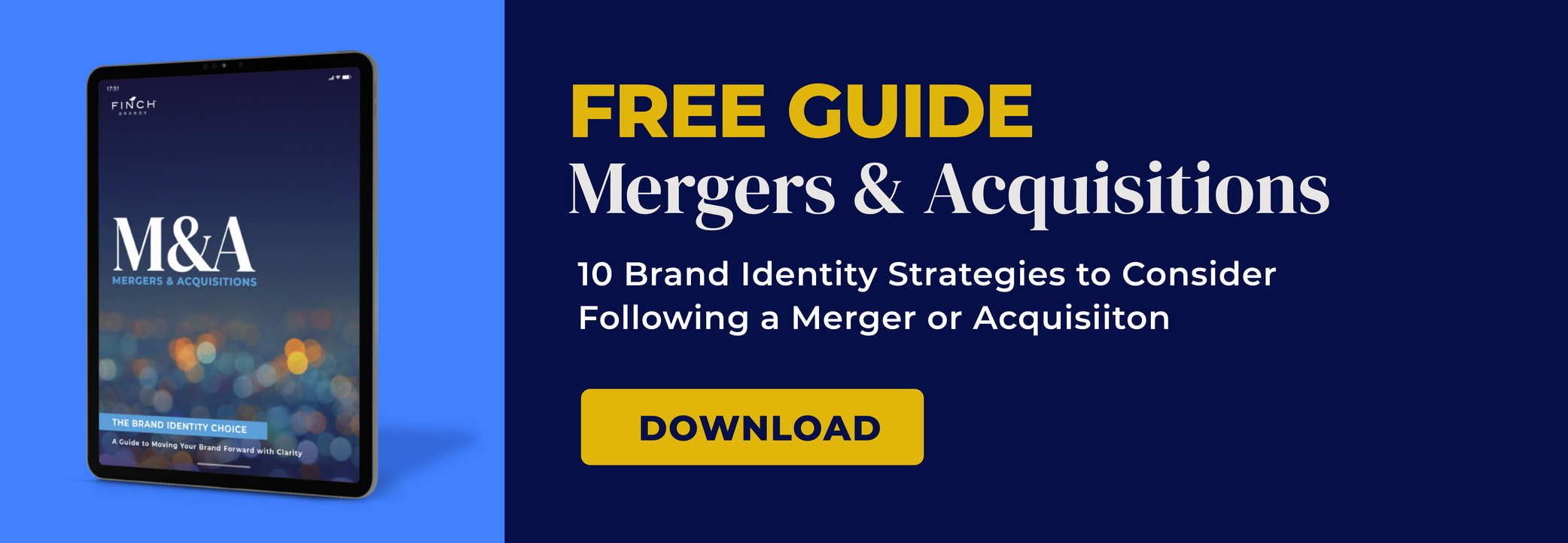Using Decision Trees for M&A Transactions: M&A Minute

Welcome to M&A Minute by Finch Brands. I’m Bill Gullan, President of Finch Brands. We are a real world brand consultancy. We help companies at key moments such as M&A moments activate, strengthen, and clarify the full potential of their brands and businesses.
Building decision trees during M&A moments
Today, we’re going to talk about a concept that we bring into many engagements called the decision tree. What I mean by that is often with clients who have more than one merger or one acquisition, as I mentioned on a previous M&A Minute episode, we want to solve the needs of today as well as tomorrow.
We find that decision trees can be important to achieving those objectives. In this case, I mean that the decision tree is a pathway that we use or apply to acquisitions to determine how, when, and at what pace and in what manner to migrate or integrate the acquired business.
Why use decision trees during multiple M&A transactions?
Decision trees are a way of establishing the if-then sequence of decisions and defining it once so that we can apply it over time. The reason to have a decision tree is that not all deals are the same.
We may establish across various acquisitions that we’re adding high brand equity companies to our portfolio. Others may not have much brand equity but have other assets that make them coveted and meaningful.
Not all deals are the same. Some are simply land grabs where we’re adding neither geographic reach nor market share within a category with which our master brand is already associated. Other acquisitions add unique capabilities, perspectives, or leaders to the portfolio.
It’s only right that they not be handled in exactly the same way. Again, we’re advocates for simplicity. But we also need to embrace the nuances of acquisitions that we may make or mergers that we may strike.
Establishing migration paths for acquired businesses
At Finch Brands, we recommend an ideal simple brand architecture endpoint in most cases. But as I’ve expressed, migration to get from here to there may differ. With a decision tree, we now have the tools to systematically analyze and establish migration paths for acquired businesses.
As noted, they are probably unlike one another. There’s a range of factors to integrate into the decision tree that has an impact on the migration path, milestones, timing, and sequence:
- Brand strength
- Longevity in the marketplace
- A sense of brand momentum or trajectory
- Whether the capabilities or the products that are added are similar to those of the core
In rare cases, acquired brands may rightfully remain in existence through the migration. They’re either product power brands, divisional brands, or, in very rare cases, standalone “endorsed by” or “powered by”.
Again, the overall goal here is to reduce complexity and have a clear method for brand integration. But the reason we want a decision tree is, again, not all acquisitions are alike. Often, it is the exception that proves the rule.
How to create a decision tree
Building a decision tree starts with assessing the brand equity of acquired businesses. Then, based on high, medium, or low brand equity, each of those eventualities creates a different path, timing, and sequence of integration actions internally and externally.
I could show you one of these if you want to give me a call. A decision tree ultimately looks like a “choose your own adventure” for how we go about those brand integrations. Some of the things that may differ based on high, low, or medium brand equity is:
- How long it takes to integrate
- The importance of internal and external cultural integration
- The method of integration over using an endorsement for a period of time
They’ll differ because acquisitions differ – and they should. There are many different reasons to covet brands and businesses and to add them to a portfolio. They’re not all related just to brand equity.
Solving the needs of today and tomorrow
The way that they are handled and migrated for the greatest potential on the backside will differ as well. And we find a decision tree is an indispensable deliverable within a process like this to solve the needs of today as well as tomorrow.
If want to be a champion of purposeful change, please contact us today and subscribe to our YouTube channel for future videos.
Finch Brands is a real-world brand consultancy that specializes in insights, strategy, and design, and has helped dozens of clients build successful post-M&A brands. We do this by helping clients win when it matters most by helping them own the change moment.








